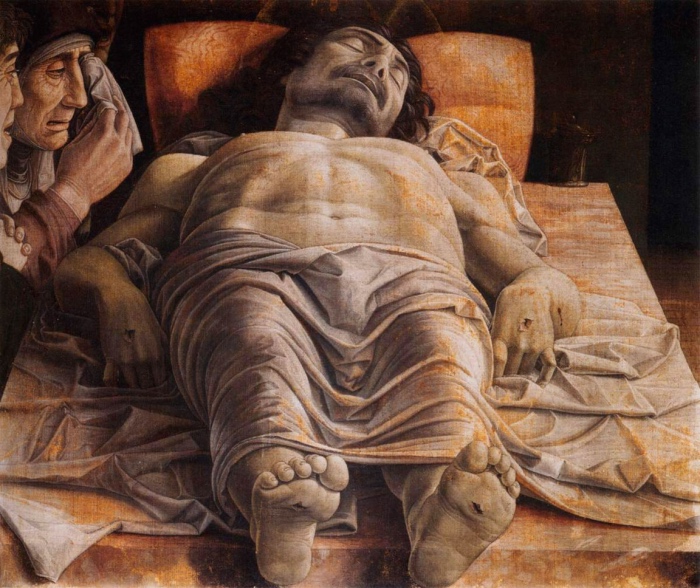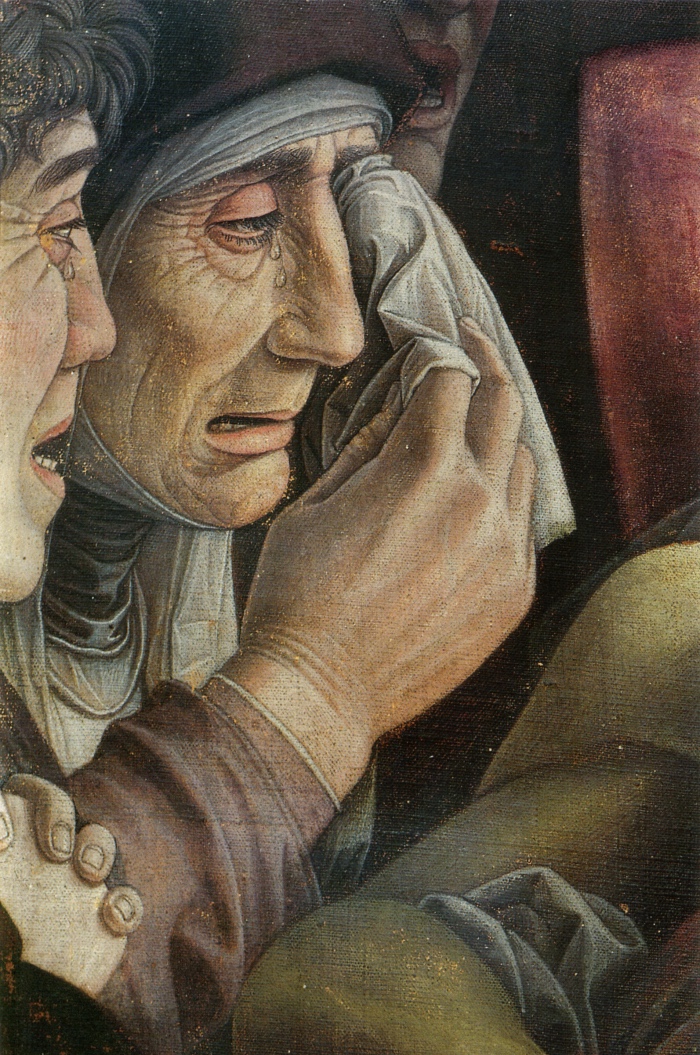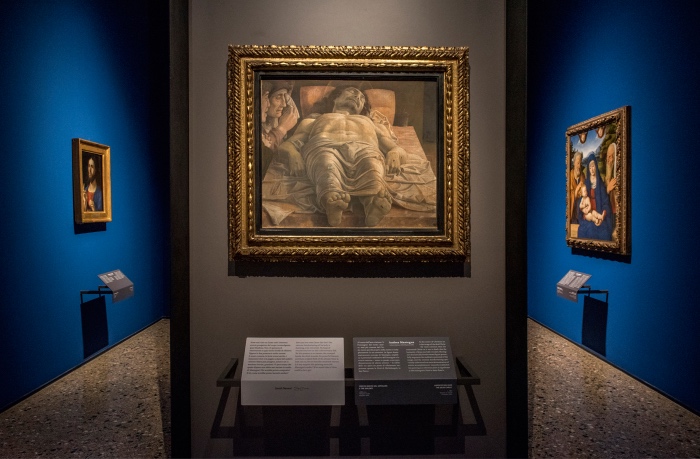
Image source: Cultura – Biografieonline.it
THE LAMENTATION OVER THE DEAD CHRIST BY MANTEGNA: WHERE YOU CAN SEE THE MOST AMAZING ARTWORK OF THE 15TH CENTURY
The Lamentation over the Dead Christ is considered one of the most beautiful, intense and moving artworks of the 15th century.
We know neither when nor for whom it was painted, but what is certain is that Mantegna kept the second version of the painting, indicated in the documents as one of the paintings he bequeathed to his son Ludovico.
In this post I’ll explain why The Lamentation over the Dead Christ is a masterpiece and where you can admire Mantegna’s painting.
READ ALSO: the artists of Renaissance.

Cristo morto, dettaglio
WHY THE LAMENTATION OVER THE DEAD CHRIST IS A MASTERPIECE
The Lamentation over the Dead Christ is one of the most original artworks ever, and in the 15th century was an absolute novelty.
The perspective makes the scene realistic, and Mantegna put the viewer inside a dramatic moment.
Death is not idealized, but is described for what it is: sad, cold, dramatic.
The Virgin Mary’s and Saint John’s face, on the left, are wracked with pain, and behind the Virgin there’s another figure crying desperately.
The foreshortening emphasizes the realism of the scene and gives the viewer the feeling of being at the feet of the Dead Christ.
MANTEGNA’S ARTISTIC STYLE
Andrea Mantegna’s artistic style is characterised by an interest in classical art and use of optical illusion, which accompany the viewer inside the scene he depicted.
In his paintings Mantegna seems to make scenes live again and makes viewers feel like they’re a part of the representation.
The Lamentation over the Dead Christ is one of the works Mantegna painted during the years he spent in Mantua at the service of the Gonzaga family.
Mantegna was the protagonist of the artistic scene of Mantua for more than forty years, and there he created several extraordinary artworks such as the frescoes of the Bridal Chamber in the Ducal Palace of Mantua (a must see, as I explained in the post Things to see in Mantua).
With his frescoes Mantegna gives the optical illusion that the walls of the room break down, opening to external gardens and light blue skies populated by angels.
In The Lamentation over the Dead Christ the amazing perspective of the lying Christ seems to follow viewer’s gaze who looks at the scene starting from Christ’s feet and sharing the Virgin Mary and Saint John’s grief.
WHERE THE LAMENTATION OVER THE DEAD CHRIST IS HOUSED
The Lamentation over the Dead Christ was acquired in 1824 by the Brera Art Gallery, where is still on display in a special room.
If you are going to admire The Lamentation over the Dead Christ by Mantegna, I recommend reading the post containing a list of other works to see at the Brera Art Gallery and how to reach the museum.

Mantegna a Brera.
READ ALSO: Renaissance artist’s workshop.


grazie, molto interessante, credevo che ci fosse un dipinto del cristo morto a roma in una chiesa che non ricordo il nome
È sempre emozionante rivederlo! Ora che è stato posto in un luogo riservato al solo dipinto ancora di più. Io più che ottantennelo vidi la prima volta in un lungo corridoio frammisto ad altre opere da cui subito si distingueva ma che non metteva in risalto il valore prospettico. Peccato invece che Lo sposalizio della Vergine che io vidi racchiuso come in una piccola nicchia ora si disperda su una grande parete perdendo la passata intimità. Porterò i miei nipoti ormai liceali a vederli e spero condividano le mie antiche emozioni
Che bello poter ammirare queste opere con i propri nipoti e trasmettere l’amore per il bello e l’arte anche alle nuove generazioni!